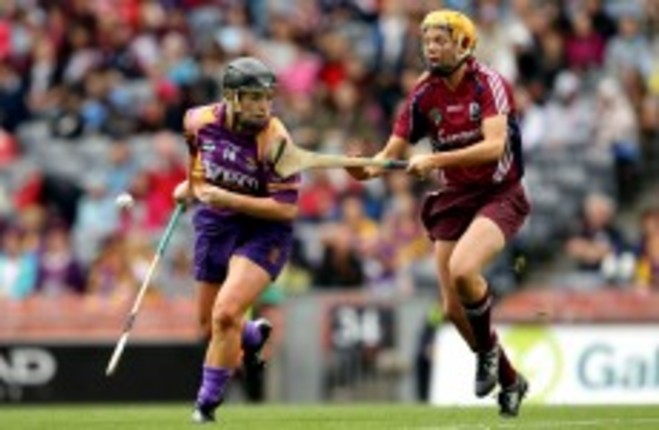THE ALL-IRELAND CAMOGIE FINALS take place today in Croke Park, with Wexford taking on relative newcomers Galway to see who will claim the O’Duffy Cup for 2010.
But because camogie is not regularly featured on TV, some may be slightly perplexed as to the differences between camogie and its sister game of hurling.
The rules of camogie, predictably enough, are broadly similar to those of hurling, but with some small adjustments to make the game slightly less physical and more fluent:
- In camogie, a player can hand-pass a score – something forbidden in hurling. Players are also permitted to drop the camóg (their hurl) to handpass a score.
- Camogie games last 60 minutes, compared to 70 in senior inter-county hurling
- The sliotar used is slightly smaller – camogie uses a size 4 sliotar, compared to the slightly heavier size 5 ball in hurling
- Shouldering is not permitted.
- The ’65′ awarded when a defender last touches a ball going over the goal line is taken from the ’45′, as it is in gaelic football
- Unlike in hurling, where certain rules apply to goalkeepers (they must be the ones to stand in goal for penalties, etc), there are no rules differentiating camogie goalkeepers from outfield players. This is why they wear the same colours as outfield players
- Puckouts are taken from the 13-metre line and not the end line.
There are other customs not formally provided for in the rules, but unique to the game too.
For example, it is more common for camogie jerseys to feature the player’s name above their number, something rarely done in hurling, and players wear ‘skorts’ – a cross between a traditional pair of shorts and a skirt.

